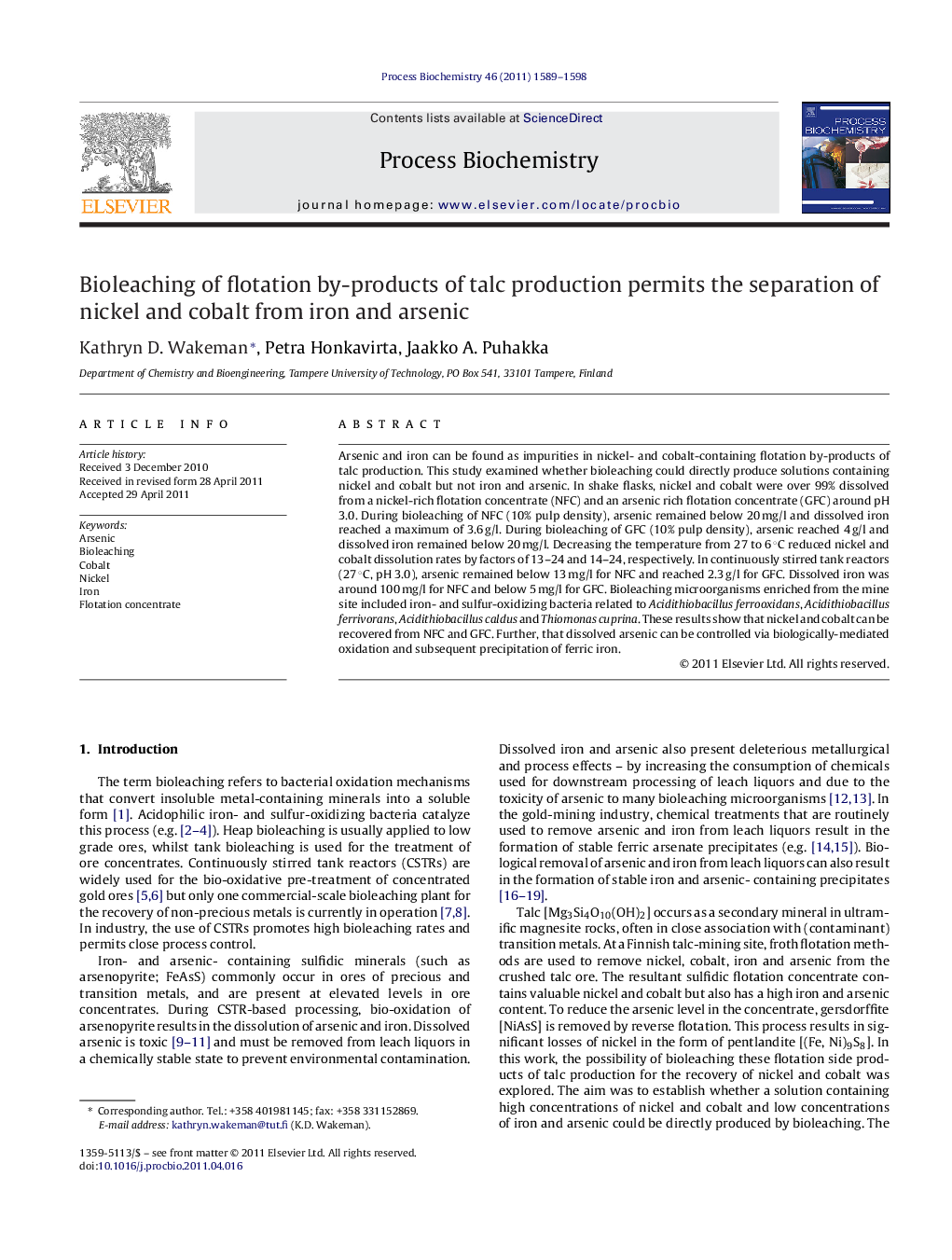| کد مقاله | کد نشریه | سال انتشار | مقاله انگلیسی | نسخه تمام متن |
|---|---|---|---|---|
| 35253 | 45083 | 2011 | 10 صفحه PDF | دانلود رایگان |

Arsenic and iron can be found as impurities in nickel- and cobalt-containing flotation by-products of talc production. This study examined whether bioleaching could directly produce solutions containing nickel and cobalt but not iron and arsenic. In shake flasks, nickel and cobalt were over 99% dissolved from a nickel-rich flotation concentrate (NFC) and an arsenic rich flotation concentrate (GFC) around pH 3.0. During bioleaching of NFC (10% pulp density), arsenic remained below 20 mg/l and dissolved iron reached a maximum of 3.6 g/l. During bioleaching of GFC (10% pulp density), arsenic reached 4 g/l and dissolved iron remained below 20 mg/l. Decreasing the temperature from 27 to 6 °C reduced nickel and cobalt dissolution rates by factors of 13–24 and 14–24, respectively. In continuously stirred tank reactors (27 °C, pH 3.0), arsenic remained below 13 mg/l for NFC and reached 2.3 g/l for GFC. Dissolved iron was around 100 mg/l for NFC and below 5 mg/l for GFC. Bioleaching microorganisms enriched from the mine site included iron- and sulfur-oxidizing bacteria related to Acidithiobacillus ferrooxidans, Acidithiobacillus ferrivorans, Acidithiobacillus caldus and Thiomonas cuprina. These results show that nickel and cobalt can be recovered from NFC and GFC. Further, that dissolved arsenic can be controlled via biologically-mediated oxidation and subsequent precipitation of ferric iron.
Journal: Process Biochemistry - Volume 46, Issue 8, August 2011, Pages 1589–1598